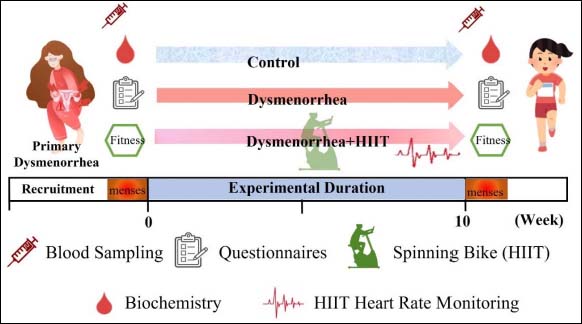 |
Figure 1.
Experimental scheme. The experiment was based on a single-blind and randomized controlled trial design. The primary dysmenorrhea participants who met the inclusion criteria were randomly assigned to the Dysmenorrhea (Dysmen) and Dysmenorrhea + HIIT (DysmenHIIT) groups, and the HIIT treatment was implemented for a 10-week period. During the HIIT exercise, participants’ heart rates were required to reach at least 85% of their maximum heart rate, as indicated by a heart rate belt. Individual blood samples were obtained approximately three days before participants’ menstruation cycles were due to begin to analyze biochemical variables, hormone, and prostaglandin levels. The questionnaires (PMS, MDQ, and SF-MPQ), physical fitness, and blood sampling were conducted before and after HIIT intervention. HIIT: high intensity interval training.